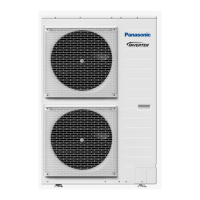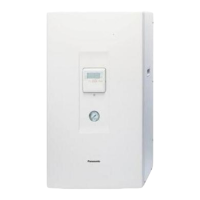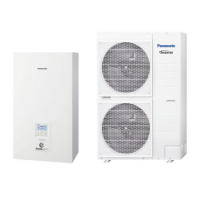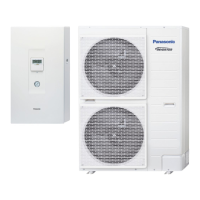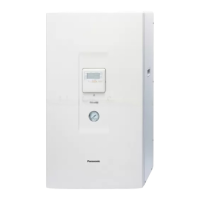Project Design
Cooling
Cooling with underoor heating, fan convectors
Old Models: Aquarea heat pump models with cooling mode are manually
switched over from the heating mode into the cooling mode and must be
switched over into the heating mode again after the end of the cooling
period.
New models: AUTO can be used to switch between HEAT and COOL
automatically. Switch over points need to be set during commissioning.
Underoor heating systems are in principle suitable for the cooling
mode, however, they cannot be operated with very low supply water
temperatures, because both the comfort decreases as well as the
danger of negatively exceeding the dew point. The surface temperature
is limited generally to minimum 20 °C. For a delta-T between supply
and return water temperatures of 3 to 4 K a specic cooling capacity
of maximum 30 to 40 W / m² can be attained. The cooling capacity is
essentially inuenced by pipe length and pipe diameter in the underoor
heating system as well as the oor covering. For a tile covered oor the
thermal transfer is signicantly better than e.g. carpeted oor, which
negatively inuences the cooling capacity.
Due to the limits on cooling capacity of underoor heating systems, the
room cooling cannot be controlled to a xed room temperature. At least
the supply water temperature must be set, which prevents the dew point
from being negatively exceeded.
Fan convectors can be operated with much lower supply water tempera-
tures than underoor heating systems ie 5 °C. Accordingly, the achievable
cooling capacity of fan convectors is greater and a greater level of comfort
is achievable than with underoor heating systems. Owing to low supply
water temperatures closed-cell insulation of the piping as well as an
integration of the condensate outlet to the building’s waste water
system or another suitable outlet must be considered with the application
of fan convectors for room cooling.
5.11 Cooling
Attention In the cooling mode, condensation of moisture in the air can occur on
the surface of the heat transfer systems when the temperature falls
below the dew point. This can lead to damage to the building or also
to danger of slipping on the oor surfaces.
The effects of the temperature falling below the dew point must there-
fore be ruled out by means of suitably placed dew point sensors or
the condensate occurring must be drained safely. The affected piping
must be insulated tightly against condensation.
5.11.2 Cooling
with fan convectors
5.11.1 Cooling
with underoor heating
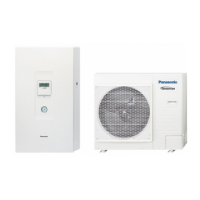
